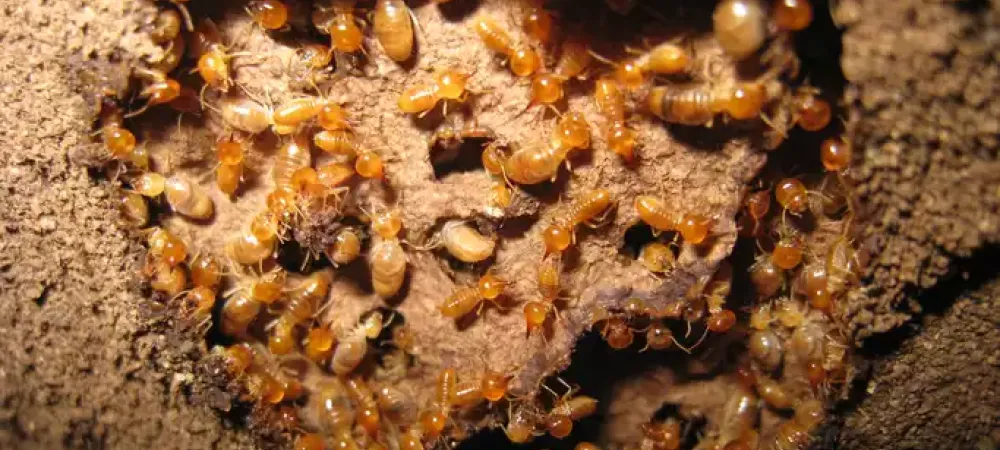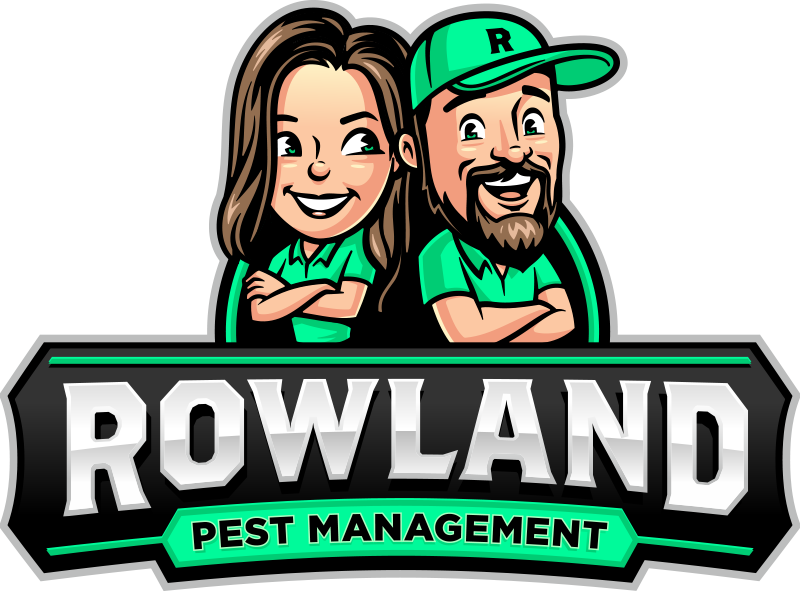How to Know If You Have Termites in Your Orlando Home

Living in a beautiful place like Orlando, Florida, comes with its perks: sunny weather, lush landscapes, and vibrant communities. However, it also brings some challenges, one of which is dealing with pests like termites. These tiny yet destructive insects can wreak havoc on your home if left unchecked. In this blog, we'll discuss how to identify if you have termites in your Orlando home and what steps you can take to address the issue effectively.
What Are Termites?
Termites are small, pale-colored insects that feed on cellulose, a material found in wood and plant fibers. They live in colonies and are known for their ability to cause extensive damage to wooden structures, including homes.
What Do Termites Look Like?
Termites are small, pale-colored insects with soft bodies, typically measuring about 1/4 to 1/2 inch in length. However, there are different types of termites within a colony, each serving specific roles, so their appearance can vary slightly depending on their caste.
- Worker Termites: These termites are responsible for foraging, feeding the colony, and building tunnels and nests. Worker termites are usually pale in color, almost translucent, and have soft bodies. They do not have wings.
- Soldier Termites: Soldier termites defend the colony against predators, primarily ants. They have larger heads and mandibles (jaws) compared to workers. Soldiers are also wingless and pale in color.
- Swarming Termites (Alates or Swarmers): These are reproductive termites responsible for starting new colonies. Swarming termites have two pairs of wings of equal length, which are shed after mating. They are often darker in color than workers and soldiers, with a thicker body.
- King and Queen Termites: These are the primary reproductives in a termite colony, responsible for producing offspring. The queen termite is much larger than other termites in the colony and can lay thousands of eggs per day. The king termite is slightly smaller and assists the queen in reproductive activities.
In general, termites have straight antennae, unlike ants, which have elbowed or bent antennae. Their soft bodies and pale coloration help them remain hidden within wood or soil, where they build their colonies and forage for food.
It's important to note that termite swarmers are the most visible type of termite as they emerge in large numbers during swarming events, often mistaken for flying ants. However, their equal-sized wings and straight antennae distinguish them from ants upon closer inspection. If you're unsure whether you're dealing with termites or ants, a professional pest control expert can help identify the insects accurately.
Common Types of Termites In Orlando, FL
In Central Florida, as well as throughout much of the United States, the most common types of termites that homeowners may encounter are subterranean termites and drywood termites.
Subterranean Termites
- Eastern Subterranean Termites (Reticulitermes flavipes): These are the most widespread and destructive type of termite in North America, including Orlando. They live in underground colonies and build mud tubes to access above-ground food sources, such as wooden structures in homes.
- Formosan Subterranean Termites (Coptotermes formosanus): While less common than Eastern Subterranean Termites, Formosan termites are known for their aggressive behavior and large colony sizes. They can cause significant damage to buildings and trees.
Drywood Termites
- Western Drywood Termites (Incisitermes minor): Drywood termites infest dry wood, including structural timbers, furniture, and wooden fixtures. Unlike subterranean termites, they do not require contact with soil and can establish colonies directly within wooden materials.
- Florida Drywood Termites (Cryptotermes brevis): This species is prevalent in Florida, including the Orlando area. They are known for infesting wooden structures, causing damage over time if left unchecked.
Both subterranean and drywood termites can cause significant damage to homes and other wooden structures if not detected and treated promptly. It's essential for homeowners to be vigilant in inspecting for signs of termite activity and to seek professional assistance if an infestation is suspected or confirmed. Professional pest control services can provide thorough inspections, treatment options, and ongoing prevention strategies to protect against termite damage.
When Are Termites Active in Florida?
In Florida, including Orlando, termites can be active throughout the year due to the warm and humid climate that provides favorable conditions for their survival and reproduction. However, there are certain times when termite activity may be more noticeable or pronounced:
- Spring: Termite activity tends to increase during the spring months, particularly after periods of rainfall or when temperatures start to rise. This period is when termite colonies may produce swarmers (reproductive termites) that emerge to establish new colonies.
- Summer: Summer is another active period for termites in Florida. The warm and humid weather encourages termite colonies to forage for food (wood) and expand their populations. Termite colonies may remain active and continue to cause damage to wooden structures during the summer months.
- Fall: While termites are still active in the fall, their activity may slightly decrease compared to the spring and summer months. However, it's essential to remain vigilant as termite colonies can continue to cause damage if left unchecked.
- Winter: In Florida, winters are relatively mild compared to colder regions, allowing termites to remain active year-round. While termite activity may slow down during colder periods, it doesn't necessarily stop entirely. Indoor environments, such as heated homes, can also provide a suitable habitat for termites during winter.
It's important for homeowners in Florida to be proactive in termite prevention and detection regardless of the season. Regular inspections, moisture control, and implementing preventive measures can help mitigate the risk of termite infestations and minimize potential damage to homes and structures. If you suspect termite activity or notice signs of infestation, it's advisable to contact a professional pest control service for an assessment and appropriate treatment.
Common Signs of Termite Infestations
Detecting a termite infestation early is crucial to prevent extensive damage to your home. Here are some signs to watch out for:
- Mud Tubes: Termites create mud tubes as protected pathways between their nests and food sources. These tubes, typically about the width of a pencil, can be found along walls, foundations, or other surfaces where termites are active.
- Wood Damage: Termites feed on wood from the inside out, leaving behind hollowed-out or damaged wood. Look for signs like buckling or sagging floors, hollow-sounding timber, or wood that easily crumbles or breaks apart.
- Discarded Wings: After mating, termite swarmers shed their wings, which can be found near window sills, light sources, or other entry points. Finding discarded wings is a strong indicator of termite activity nearby.
- Frass (Termite Droppings): Termite droppings, also known as frass, resemble small wood-colored pellets or sawdust. You may find them near infested wood, in attics, or in other areas where termites are active.
- Tunnels in Wood: Termites may create tunnels or galleries within wood as they feed. These tunnels are often visible upon closer inspection of infested wood and may contain mud or termite droppings.
- Hard-to-Open Doors or Windows: As termites feed on wooden structures, they can cause doors or windows to become difficult to open or close properly. This can be due to the warping or damage of the wood in the door and window frames caused by termite activity.
- Presence of Termite Swarmers: Sometimes, homeowners may directly encounter winged termites indoors. They are attracted to light sources and may be seen swarming around windows, doors, or light fixtures, especially during warmer months. If you notice winged insects resembling ants but with straight antennae and equal-sized wings, they could be termite swarmers.
- Sagging or Bubbling Paint: Termites can cause paint on walls or wooden surfaces to bubble, blister, or appear uneven. This occurs as they tunnel through the wood underneath, disrupting the paint's adhesion to the surface.
- Hollow Sound: Tap on wooden surfaces suspected of termite damage. If the wood sounds hollow or papery, it may indicate that termites have eaten away at the interior.
If you notice any of these signs in your home, it's important to contact a professional pest control provider for a thorough inspection and appropriate treatment. Early detection and intervention can help prevent further damage and protect your property from costly repairs.
What To Do If You Have Termites
Discovering termites in your Orlando house can be concerning, but taking prompt action is crucial to minimize damage and prevent further infestation. Here are steps to follow if you find termites:
- Don't Panic: While it's natural to feel alarmed, staying calm and focused will help you address the issue effectively.
- Contact a Professional Pest Control Service: Immediately reach out to a reputable pest control company that specializes in termite extermination. Experienced professionals will conduct a thorough inspection to assess the extent of the infestation and recommend appropriate treatment options.
- Follow Expert Recommendations: Based on the inspection findings, the pest control experts will propose a treatment plan tailored to your situation. This may include using liquid termiticides, installing bait systems, or employing other methods to eradicate termites.
- Implement Preventive Measures: After treating the current termite infestation, focus on preventing future problems. This includes addressing moisture issues (since termites are attracted to damp environments), sealing cracks and entry points, using termite-resistant materials, and scheduling regular termite inspections.
- Consider Structural Repairs: Depending on the damage caused by termites, you may need to repair or replace affected wooden structures, such as beams, floorboards, or furniture. Consult with contractors or carpenters as needed.
- Follow-Up Inspections: Schedule follow-up inspections with your pest control provider as recommended. Regular monitoring helps ensure that the termite infestation has been effectively eliminated and prevents new infestations from taking hold.
By taking swift and comprehensive action with the help of professionals, you can effectively manage and resolve termite infestations in your Orlando house, safeguarding your property from further damage.
Call The Termite Control Experts
If you are looking for effective termite control in Orlando, look no further than Rowland Pest Management! With over 9 years of local experience, our termite exterminators are trained to find all evidence of termites and work with you to come up with a targeted treatment plan that is built around your needs. Contact our team today to learn more and schedule your termite inspection!
